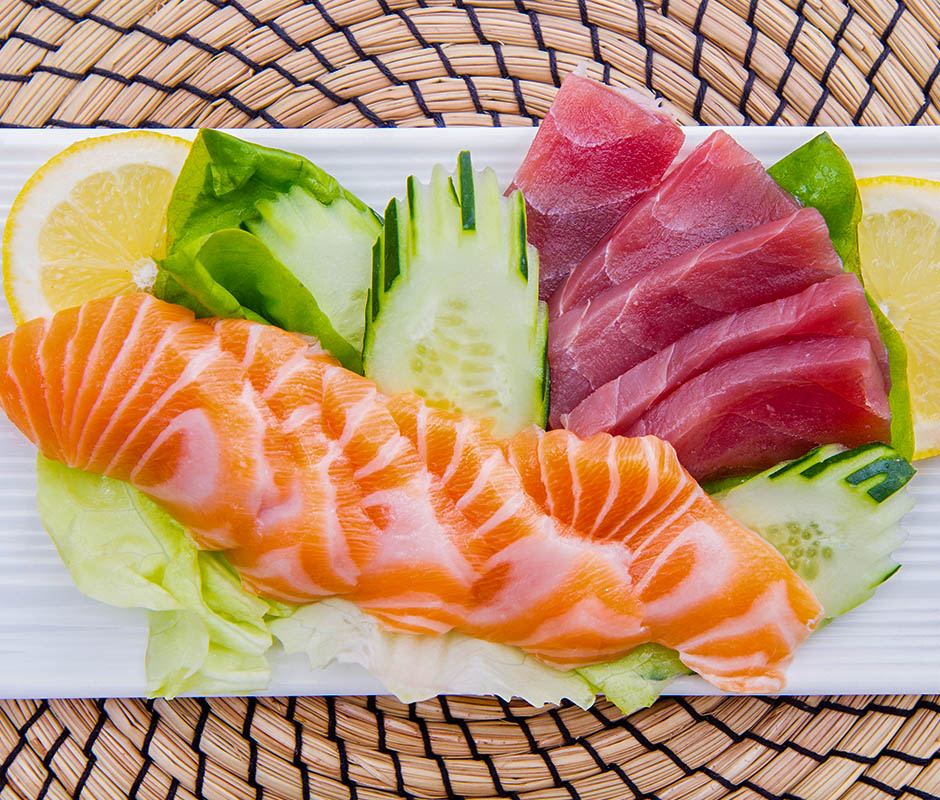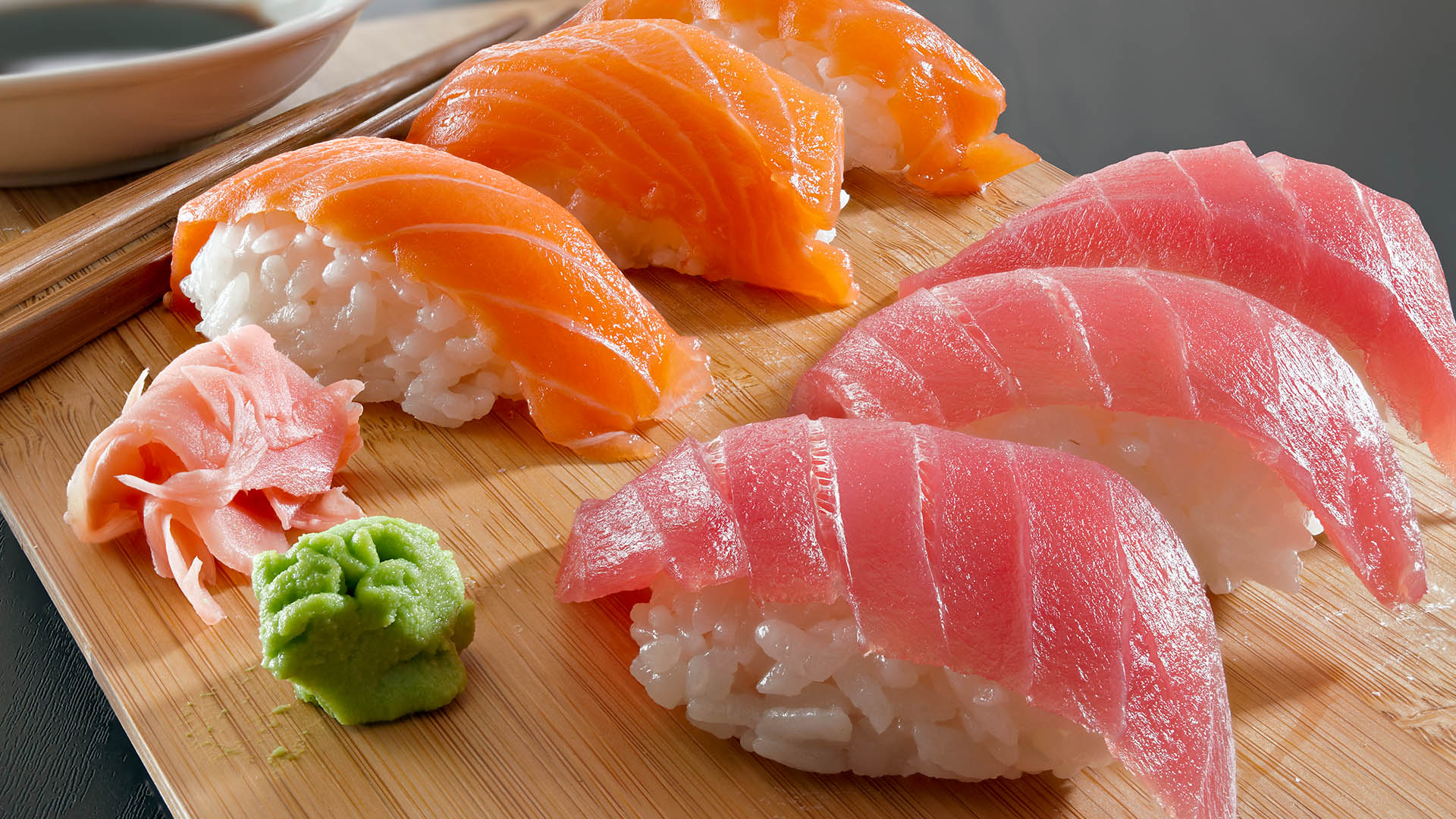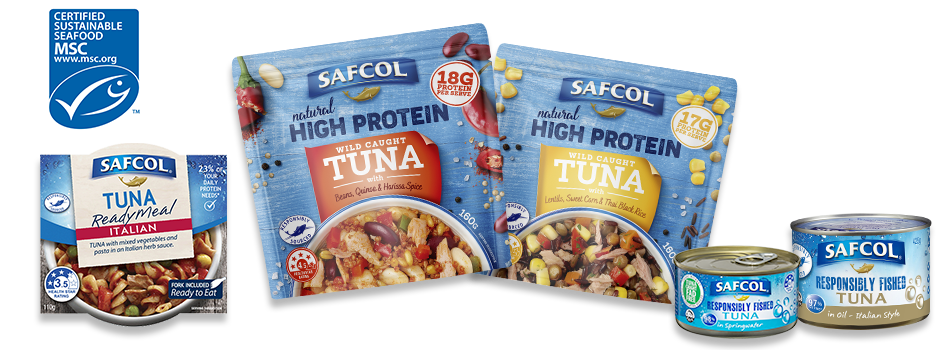Salmon vs Tuna — Which One Wins?
Posted on : May 26, 2022
by Ashleigh Feltham Accredited Practising Dietitian and Accredited Nutritionist
Salmon vs Tuna — Which One Wins? Fans of both salmon and tuna often ask about which fish is best for their health. There are similarities and differences between salmon and tuna, so the answer is not a simple one. Both fish have benefits, but each variety has a different nutrient profile.
Both salmon and tuna are a complete source of protein, which means they both contain all of the essential amino acids that your body needs. Protein not only helps you to maintain lean muscle mass, but it also helps to keep you feeling fuller for longer after you eat. This can be a useful strategy to help you achieve and maintain healthy body weight.
Comparing salmon and tuna, tuna is lower in calories than salmon. This is predominantly because salmon has around 13 times the fat content as tuna. In terms of caloric value, cooked salmon contains 37 kilojoules or nine calories of fat per gram, and 17 kilojoules or four calories per gram of protein and carbohydrates.
It’s important to consider the type of fats found in salmon. These fats are mostly essential omega-3 polyunsaturated fats, needed for the proper function of the body, and the brain. The omega-3 fats in salmon are also a heart-healthy choice over animal fats from other sources, such as beef steak.
Tuna contains more protein than salmon and ten times the amount of Niacin (B3). We need niacin to convert the food we eat into energy, and it plays an important role in repairing damaged deoxyribonucleic acid (DNA).
Salmon doesn’t lose out on B vitamins. It contains 12 times the amount of folate (B9) compared to tuna. Folate is necessary to make and repair DNA, and it’s essential for the formation of the neural tube of a growing foetus, making it a vital component of nutrition for expectant mothers.
Salmon that contains bones has three times the amount of calcium compared to tuna. Calcium is not only important for strong teeth and bones — calcium is also needed for normal muscle contraction. Salmon also has twice the amount of zinc as tuna. Zinc is an important mineral, essential for an optimal immune system and metabolism.
Salmon is a top dwelling fish; it doesn’t live as deep in the water as tuna. The lower dwelling tuna is therefore more exposed to mercury. But because canned tuna usually contains smaller varieties of tuna, they generally have a lower mercury content than older, freshly caught tuna. Yellowfin and skipjack varieties have the lowest mercury levels. Look for Marine Stewardship Council (MSC) certification for wild-caught, sustainable salmon.
The Food Standards of Australia and New Zealand recommend including a variety of seafood in your diet for optimal health and well-being. Include two to three serves of 100g of cooked weight salmon and tuna every week as a healthy lifestyle choice for a multitude of health benefits.
Take home message
Salmon vs Tuna — Which One Wins? Both tuna and salmon are nutrient-dense, lean meat choices to include in your diet two to three times a week. Choose the highest quality salmon and tuna you can find that has been ethically sourced for the good of your health, and for that of the planet.
Reference: Australian Food Composition Database.





